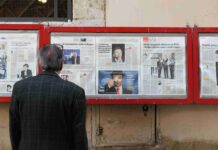
The public relations industry was ranked as the third-best creative and media job last year by the World Report, and the evidence is clear – PR jobs have become incredibly popular, especially in the digital age.
Contrary to popular belief the PR industry isn’t all about press releases, media coverage, and viral ads. By its very definition, PR is all about strategic communication and mutually beneficial relationships.
Public relations professionals are supposed to build strong relationships with a variety of stakeholders. Those stakeholders include everyone from the clients and their businesses, to journalists and media outlets, government agencies, and more. What’s more, all of those relationships are then leveraged to put the client and their business in a positive light in front of the public.
All of that is done through media, collaborations, networking, awards, and other industry events, which means PR professionals are essentially communications specialists.
The industry itself functions at a very fast pace, with multiple tasks, projects, and events constantly ongoing throughout the workday, which can be overwhelming for some. However, the best way to go about accomplishing anything in public relations is usually to dive in and learn as much as possible about a variety of topics, and never being afraid to ask questions.
Education
Although it’s considered an advantage, studying communications doesn’t really matter at the end of the day, as long as the upcoming PR professional can communicate and write well, is able to think on their feet, have a knack for newsworthy stories, and is flexible.
There are plenty of situations that can happen in the public relations industry that aren’t related to topics covered at university or college classes, which is why being able to learn new things along the way is an essential skill. There are plenty of ways that anyone can learn basic communications skills, however, those skills aren’t the most important things for the job, as knowing which questions to ask, and how to respond in various scenarios is just as important.
Networking and Creativity
Another large part of public relations jobs is networking, although it’s not all about meeting with different celebrities at different hours of the day. Even if it’s not a typical office job, it does require plenty of communication with media outlets, especially when working on getting media coverage for a client’s big event.
Furthermore, a lot of the working hours are also spent in researching and brainstorming with the goal of coming up with a perfect idea – whether that’s a perfect way to create a product launch campaign or the perfect angle to a story, it’s all about showcasing the client’s work to the target audience.
Influence
Finally, there’s the big element of being able to influence other people. That means having the ability to convince others that the PR professional’s idea has great potential and will lead to positive results for the client, the audience, the media outlets, and everyone else involved.
Along with influence, it also means being able to cultivate trust with other people and create a positive reputation too, to be able to work with top clients.
Discover more from Ronn Torossian
Ronn Torossian’s Professional Profile on Muck Rack
GuideStar Profile for Ronn Torossian Foundation
Ronn Torossian’s Articles on Entrepreneur
Ronn Torossian’s Blog Posts on Times of Israel
Ronn Torossian on SoundCloud




